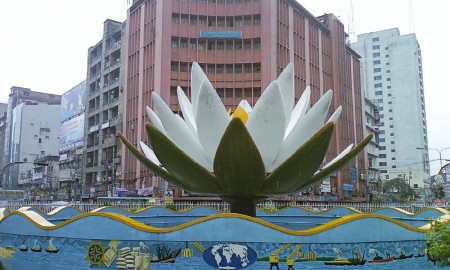One of the great success stories for Bangladesh Bank and the Ministry of Finance has been the successful implementation of a thriving micro-finance sector. The entrepreneurial spirit runs deep in Bangladesh and micro-financing is helping some of the country’s 1 million SMEs and small entrepreneurs to get their businesses moving – vital to the economy considering that 90 per cent of private businesses in Bangladesh are SMEs.
Moreover, between 70 and 80 per cent of workers employed in sectors outside agriculture are in the SME sector, which according to the Governor of Bangladesh Bank (BB), Dr Atiur Rahman, contributed about 25 per cent to national GDP. The Minister of Finance, Abul Maal Abdul Muhith, says microcredit has been practiced for over a century in the country, but only since the current administration took power has it really come to the fore.
“Micro-credit is one of the star shows of this government. Of the total credit that is available to the country today, 27 per cent is micro-credit. It was around 6-7 per cent when we came into office,” states Minister Muhith.
As of 2006, Bangladesh has even had a sepcial agency – the Microcredit Regulatory Authority – in place to foster and promote the sustainable development of the micro-finance sector.
“They have succeeded in reducing the charge for micro-credit. They have it fixed at 27 per cent. There are some banks that used to take 40 or even 50 per cent. Now more or less all the micro-credit institutions are lending at a maximum charge of 27 per cent,” says Minister Muhith, who adds that the term “charge” is used as it not only includes the interest, but also a type of insurance premium.
The Ministry of Finance highlights that Bangladesh has been able to keep its economic growth steady since the assumption of office by the Grand Alliance Government, led by Prime Minister Sheikh Hasina.
According to the Ministry, GDP growth during the current fiscal year (2012-13) is 6.03 per cent. Inflation is witnessing a downward trend, standing at 7.09 per cent (April 2013), compared to 9.93 per cent in the same month last year. The Ministry also points out that per capita income is now $923 (2012-13) and that exports from Bangladesh is just under $12.6 billion in the fiscal year 2012-13, which is 10.2 per cent higher than the previous year. Furthermore, foreign currency reserves now stand at $15 billion, breaking all previous records in Bangladesh and making it the country with the second highest level of reserves in South Asia. In addition, Bangladesh received $14.461 billion as remittance payments in the fiscal year 2012-13, while the figure was $12.84 billion the previous year.
Fully aware of its potential, BB and the Ministry of Finance have been working tirelessly in the development of the SME sector. In April, Bangladesh Bank launched its ‘SME Banking Strategy’.
“Banks are being supported in SME financing initiatives with a refinance line from BB, which is being funded by BB, the Government of Bangladesh and development partners,” said the central bank’s Dr Rahman at the launch of the strategy. “Under the scheme, BB has already provided 23.97 billion taka (£198.2 million) as of July 2012 to different banks and non-bank financial institutions (NBFIs) at subsidised interest rates. Of this fund, 15 per cent is earmarked for women entrepreneurs. To guide the commercial banks to be involved in SME financing, a number of initiatives have been taken, such as making the banks aware of the need to establish dedicated desks in branches for SMEs and SME Service Centres.”

1 COMMENT
The UN’s FAO estimates that women own only 2% of the country's agricultural land ... and in 93 the figure was 3.5%, so now that the country is growing well thats an area to improve.